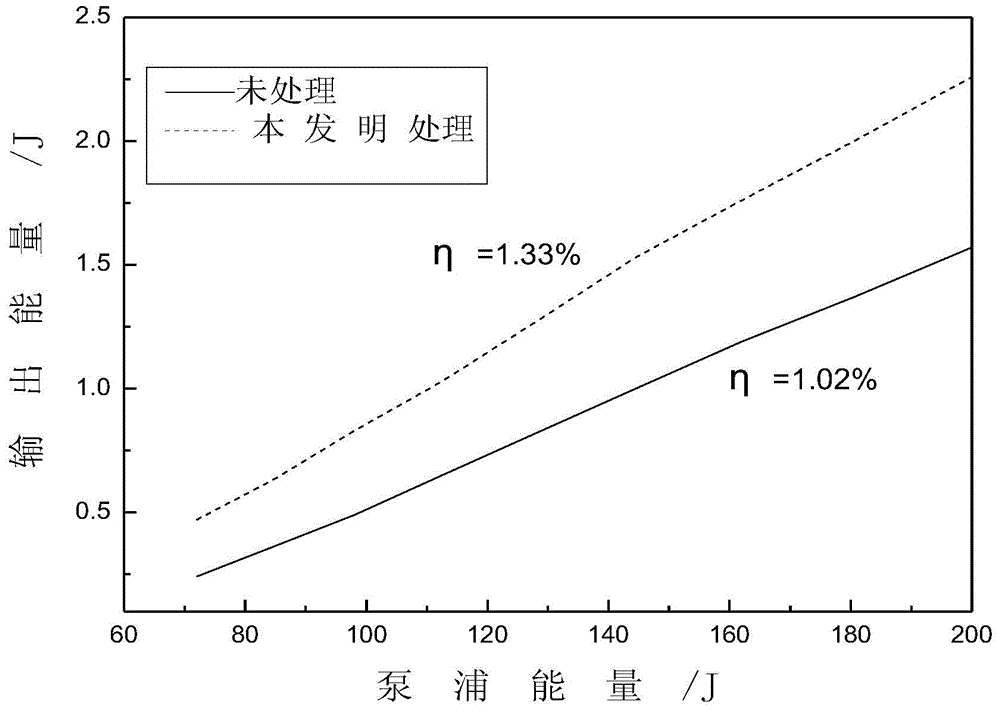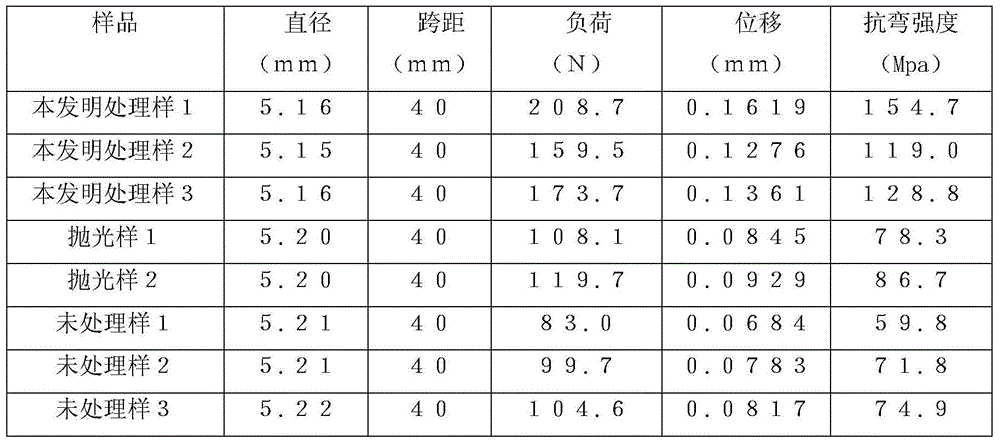Phosphate laser glass surface enhancement processing method
A technology of laser glass and processing method, applied in the field of surface treatment of phosphate laser glass or phosphate laser glass, can solve problems such as inability to achieve corrosion effect, improve repetition frequency and thermal damage threshold, reduce roughness, reduce surface Effects of Roughness and Defects
- Summary
- Abstract
- Description
- Claims
- Application Information
AI Technical Summary
Problems solved by technology
Method used
Image
Examples
no. 1 example
[0038] Strong acid system:
[0039] Composition mol%
[0040] h 2 SO 4 (phosphoric acid) 0.00%
[0041] HClO 4 (perchloric acid) 100.00%
[0042] Complexing agent system:
[0043] Composition mol%
[0044] (NaPO 3 ) 6 (sodium hexametaphosphate) 0.00%
[0045] NH 4 F (ammonium fluoride) 100.00%
[0046] The mixed acid is composed of a strong acid system, a complexing agent system and pure water in a molar ratio of 5:1:5.
[0047] Strong base system:
[0048] Composition mol%
[0049] KOH (potassium hydroxide) 0.00%
[0050] NaOH (sodium hydroxide) 100.00%
[0051] Complexing agent system:
[0052] Composition mol%
[0053] EDTA (ethylenediaminetetraacetic acid) 0.00%
[0054] K 2 CO 3 (potassium carbonate) 100.00%
[0055] The mixed acid-base is composed of a strong base system, a complexing agent system and pure water, and the molar ratio range of the three is: 5:1:1.
[0056]Surface treatment steps:
[0057] Step 1: Put the finely ground phosphate laser...
no. 2 example
[0063] Strong acid system:
[0064] Composition mol%
[0065] h 2 SO 4 (sulfuric acid) 20.00%
[0066] HClO 4 (perchloric acid) 80.00%
[0067] Complexing agent system:
[0068] Composition mol%
[0069] (NaPO 3 ) 6 (sodium hexametaphosphate) 30.00%
[0070] NH 4 F (ammonium fluoride) 70.00%
[0071] The mixed acid is composed of a strong acid system, a complexing agent system and pure water in a molar ratio of 5:1:10.
[0072] Strong base system:
[0073] Composition mol%
[0074] KOH (potassium hydroxide) 25.00%
[0075] NaOH (sodium hydroxide) 75.00%
[0076] Complexing agent system:
[0077] Composition mol%
[0078] EDTA (ethylenediaminetetraacetic acid) 30.00%
[0079] K 2 CO 3 (potassium carbonate) 70.00%
[0080] The mixed alkali is composed of a strong alkali system, a complexing agent system and pure water, and the molar ratio range of the three is: 5:1:2
[0081] Surface treatment steps:
[0082] Step 1: Put the finely ground phosphate laser g...
no. 3 example
[0088] Strong acid system:
[0089] Composition mol%
[0090] h 2 SO 0 (sulfuric acid) 50.00%
[0091] HClO 4 (perchloric acid) 50.00%
[0092] Complexing agent system:
[0093] Composition mol%
[0094] (NaPO 3 ) 6 (sodium hexametaphosphate) 50.00%
[0095] NH 4 F (ammonium fluoride) 50.00%
[0096] Mixed acid is composed of strong acid system, complexing agent system and pure water in a molar ratio of 5:1:15
[0097] Strong base system:
[0098] Composition mol%
[0099] KOH (potassium hydroxide) 50.00%
[0100] NaOH (sodium hydroxide) 50.00%
[0101] Complexing agent system:
[0102] Composition mol%
[0103] EDTA (ethylenediaminetetraacetic acid) 50.00%
[0104] K 2 CO 3 (potassium carbonate) 50.00%
[0105] The mixed acid is composed of a strong base system, a complexing agent system and pure water, and the molar ratio range of the three is: 5:1:3
[0106] Surface treatment steps:
[0107] Step 1: Put the finely ground phosphate laser glass sample i...
PUM
 Login to View More
Login to View More Abstract
Description
Claims
Application Information
 Login to View More
Login to View More - R&D
- Intellectual Property
- Life Sciences
- Materials
- Tech Scout
- Unparalleled Data Quality
- Higher Quality Content
- 60% Fewer Hallucinations
Browse by: Latest US Patents, China's latest patents, Technical Efficacy Thesaurus, Application Domain, Technology Topic, Popular Technical Reports.
© 2025 PatSnap. All rights reserved.Legal|Privacy policy|Modern Slavery Act Transparency Statement|Sitemap|About US| Contact US: help@patsnap.com



